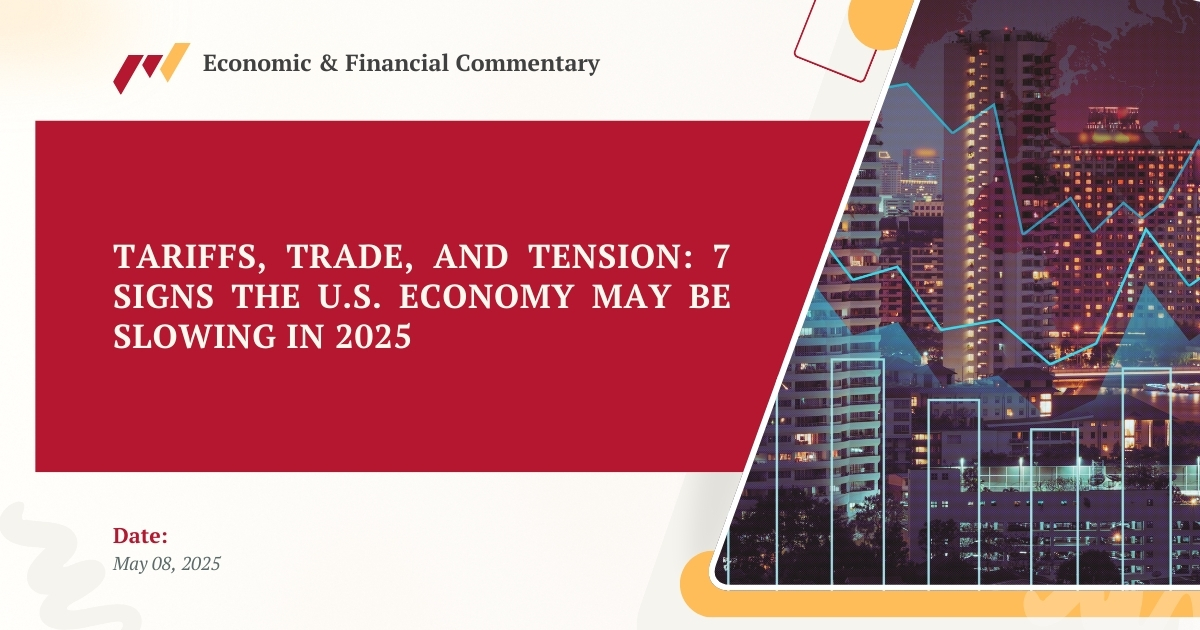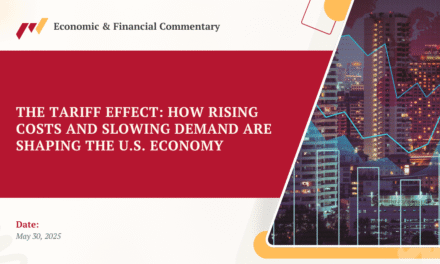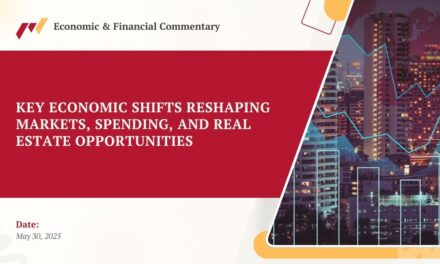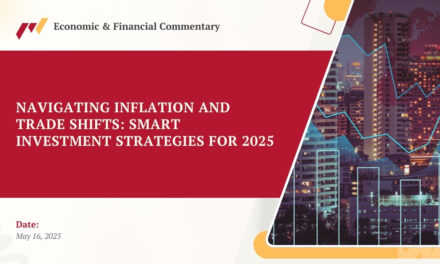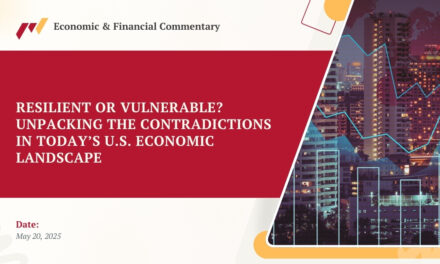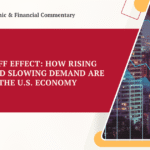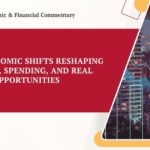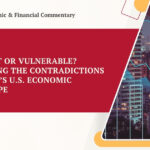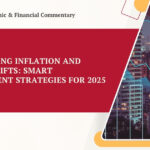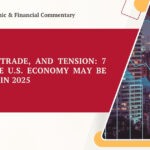The latest Wells Fargo Economic Commentary (May 2, 2025) reveals a U.S. economy navigating through a
complex mix of strong internal demand and growing external pressures. While the job market remains
resilient, deeper issues related to tariffs, trade, and inflation are beginning to surface. Here are 7 key signs
that suggest a slowdown may be underway:
Job Market Shows Resilience, But Momentum Slows
In April, the U.S. economy added 177,000 jobs-surpassing expectations and signaling continued labor market
strength. However, revisions to February and March figures reduced previous estimates by 58,000, revealing
a weakening trend. The manufacturing sector, in particular, showed signs of strain with job losses aligning
with a third consecutive month of contraction in the ISM Manufacturing Index. Additionally, initial jobless
claims rose to 241,000-the second-highest in six months-suggesting some softening in employment stability.
While job creation continues, the pace is clearly slowing.
Q1 GDP Shrinks as Trade Woes Deepen
The U.S. economy shrank by -0.3% in Q1 2025, primarily driven by a sharp decline in net exports.
Businesses rushed to import goods before April’s new tariffs took effect, leading to a temporary spike in
imports and a massive trade imbalance. This surge in imports caused net exports to subtract nearly 5
percentage points from overall GDP growth. Despite this, underlying domestic strength remains
evident-consumer and business demand held firm, with real final sales to private domestic purchasers
increasing by 3.0%. Still, the export-import imbalance paints a concerning picture for future quarters.
Tariff Fears Trigger Consumer Spending Surge
Consumers accelerated spending in March, especially on big-ticket items like cars and appliances. Real
personal consumption rose by 0.7%, driven by fears of looming price increases tied to tariffs. Vehicle
spending alone surged by $57 billion, as buyers rushed to beat the April tariff deadline. While this created a
temporary boost in retail and durable goods sales, it is expected to be followed by a dip in demand in the
coming months-highlighting how tariff anxiety can shift spending behavior and distort economic trends.
Consumer Confidence Slips Amid Inflation Anxiety
The Conference Board’s Consumer Confidence Index showed a significant drop in April, with future
expectations falling more sharply than assessments of current conditions. This divergence suggests that
while Americans still feel relatively stable today, they are increasingly anxious about the months ahead. The
primary concerns include inflation, job security, and declining real income. Although March inflation data was
flat, upcoming tariffs are expected to raise prices on everyday goods, further eroding consumer purchasing
power and likely dampening household spending.
Record Trade Deficit Raises Alarm
The U.S. is on track to record its largest monthly trade deficit in history, with March estimates reaching
$138.5 billion. This spike is not indicative of increased productivity, but rather a rush by importers to beat
impending tariffs. The result is an unsustainable import surge, which will likely lead to weaker import volumes
in the months ahead. This imbalance distorts GDP calculations and raises concerns about the long-term
effects of trade policy on economic stability and domestic production.
Fed Holds Rates-But Cuts Likely on the Horizon
In response to economic uncertainty, the Federal Reserve has kept interest rates steady at 4.50%. However,
their latest guidance includes expectations of rate cuts totaling 125 basis points by the end of 2025. The Fed
is walking a fine line-balancing inflation pressures caused by tariffs with the need to support slowing growth.
A softening labor market, weakening trade, and deteriorating consumer confidence are likely to push the Fed
toward easing monetary policy in the coming months.
Auto Tariff Relief Offers Limited Reprieve
In a notable policy shift, the White House announced that the newly implemented 25% auto import tariffs will
not stack with existing duties on steel and aluminum. This offers some cost relief for automakers, especially
those producing vehicles in the U.S. Additionally, qualifying manufacturers can receive reimbursements of up
to 3.75% of vehicle value in the first year. While this eases immediate cost pressures, it does little to resolve
the broader uncertainty created by global trade tensions and disrupted supply chains.
Conclusion: Watching the Warning Signs
The U.S. economy is not in crisis-but the warning signs are impossible to ignore. Strong domestic demand
continues to support growth, but external forces such as trade imbalances, inflation risks, and waning
consumer confidence are creating headwinds. As we move further into 2025, business leaders, investors,
and policymakers will need to closely monitor these indicators to navigate the uncertainty ahead.
This blog is a summary and commentary based on publicly available insights from Wells Fargo’s economic report dated May 2, 2025. All rights belong to the original publisher.

